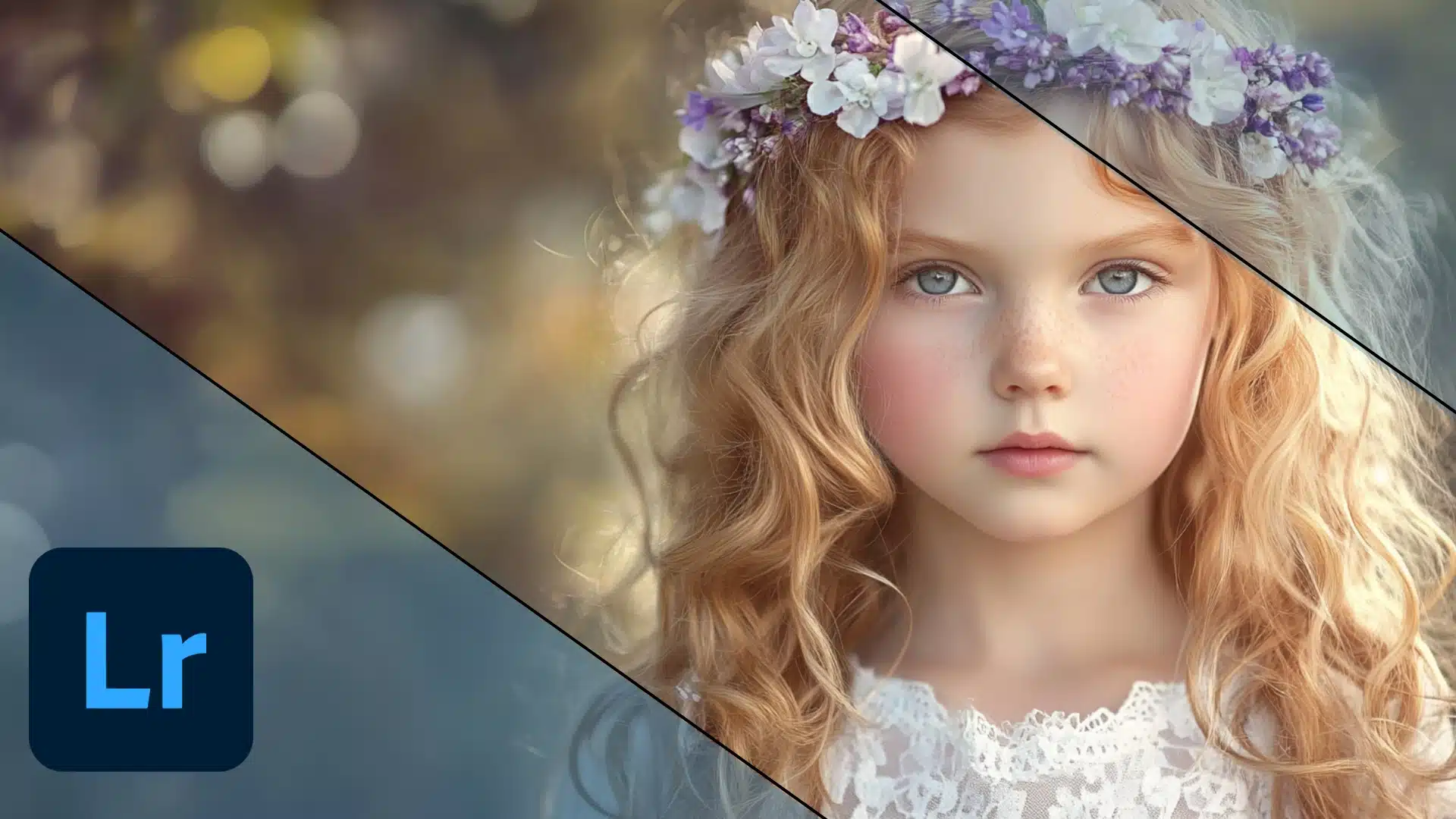
Hi there! As an experienced photographer, I know that white balance can make or break your photos. It’s not just about adjusting colors, it’s about getting that perfect shot every time. Lightroom white balance tools might seem complex, but they’re incredibly powerful once you get the hang of them.
Table of Contents
3 Ways to Adjust Lightroom White Balance
Using the White Balance Selector Tool (Eyedropper Tool)
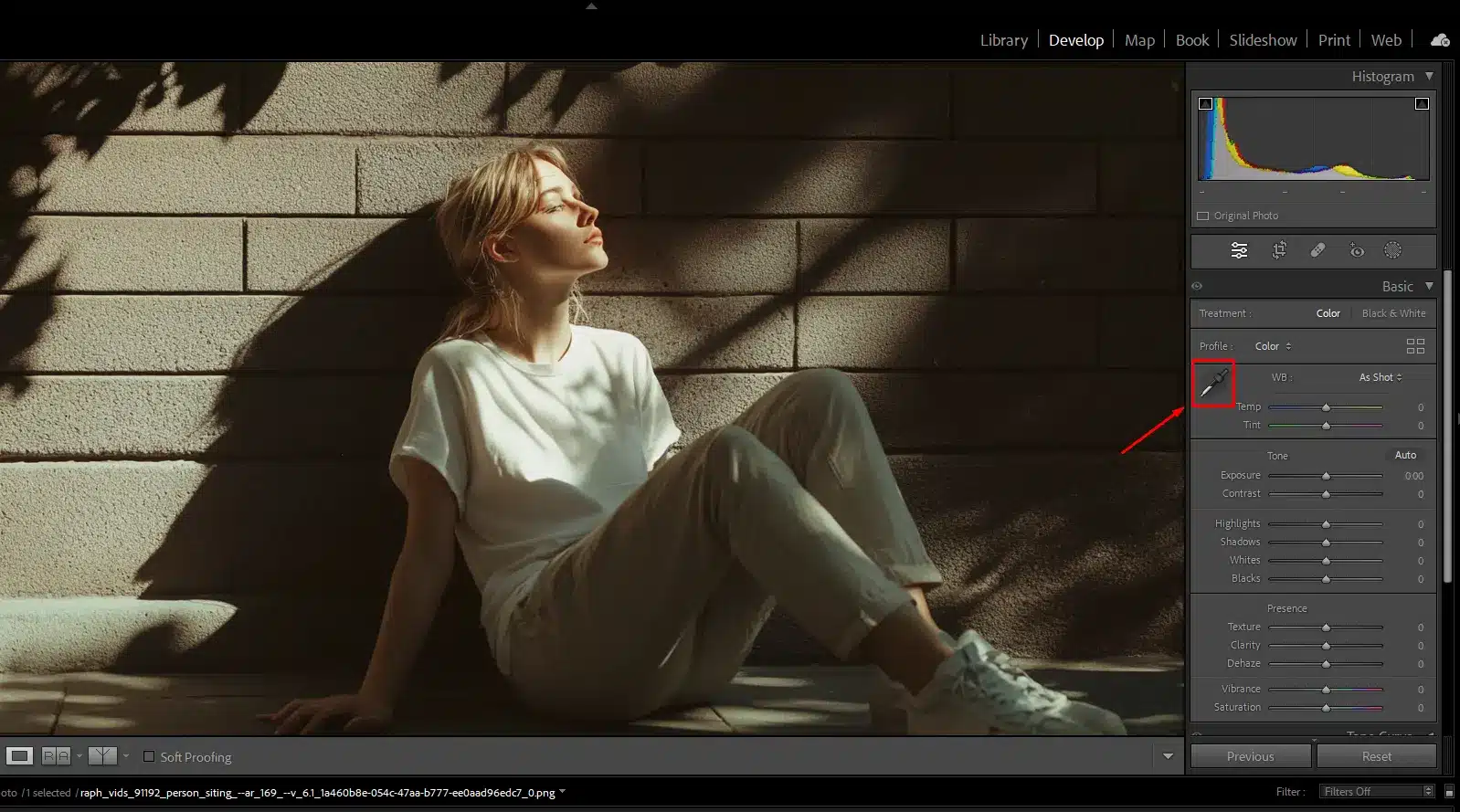
Steps to Use:
- Open your image in the Develop Module in Lightroom.
- In the Basic Panel, locate the eyedropper icon.
- Click on the Eyedropper Tool to activate it.
- Move the tool over your image and find a spot that should be a neutral gray or white. This could be a gray card, a white object, or a neutral color area.
- Click on the selected area. Lightroom will automatically adjust the Temperature to fix white balance based on the chosen spot.
Using the Temperature and Tint Sliders
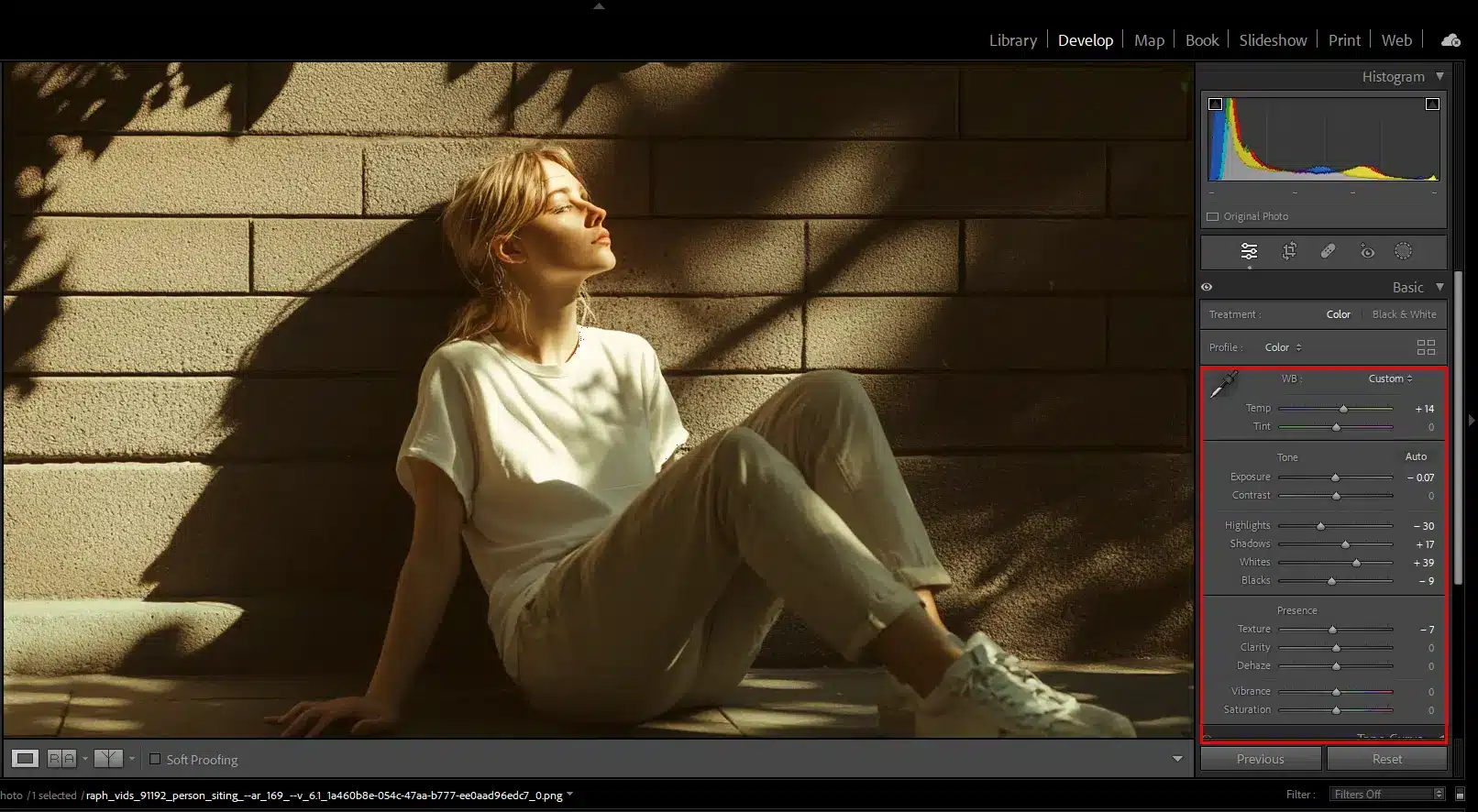
Steps to Fix White Balance Using Temperature and Tint Sliders:
- Open your image in the Develop Module.
- In the Basic Panel, you will see two white balance sliders: Temp and Tint.
- Drag the Temp Slider left or right to cool down or warm up the image.
- Use the Tint Slider to balance the shades. Slide left to add green and right to add magenta.
- Fine-tune the adjustments by using the up and down arrow key for subtle changes.
Using Lightroom’s White Balance Presets
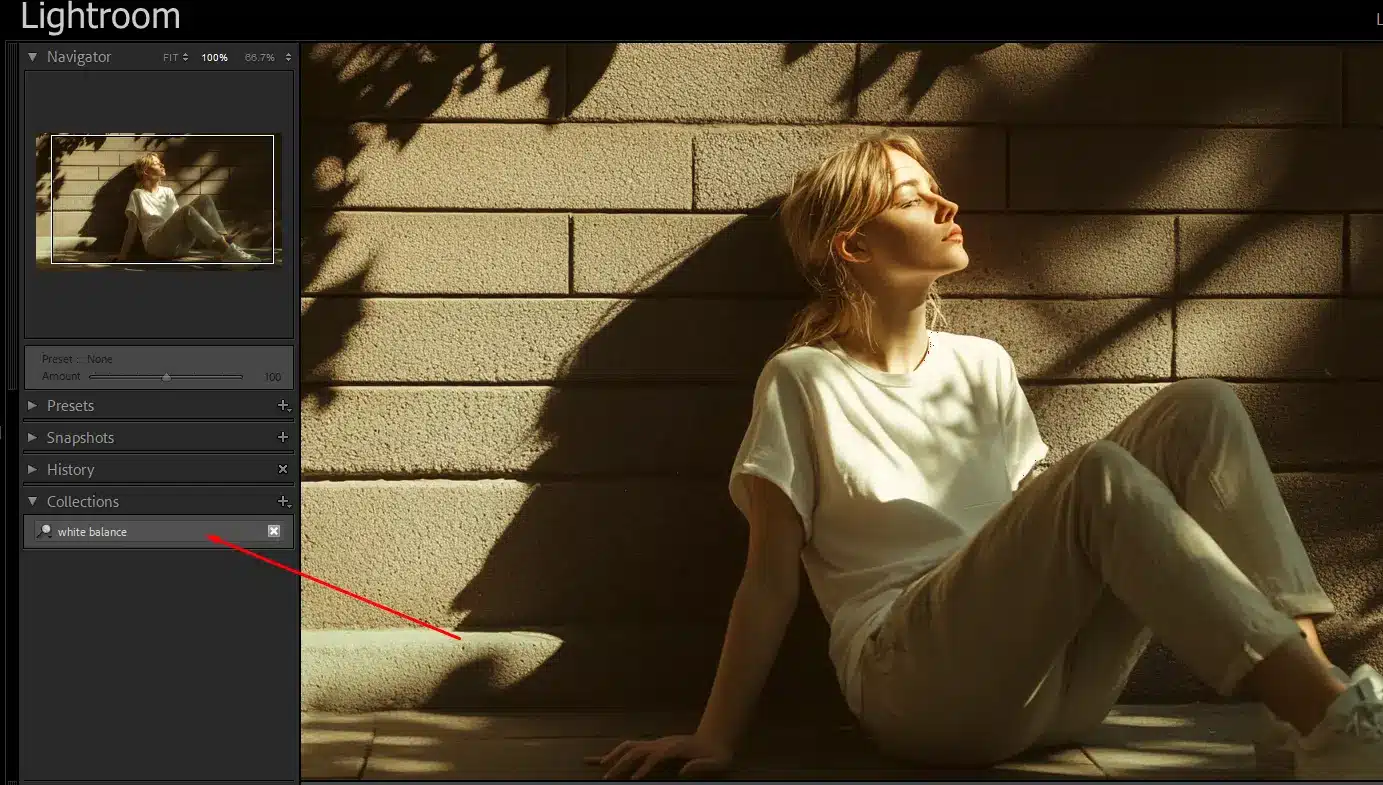
Steps to Use White Balance Presets:
- Open your image in the Develop Module.
- In the WB Panel, click on the White Balance drop-down menu.
- Select a preset that matches your shooting conditions, such as Daylight, Cloudy, Tungsten, or Fluorescent.
- After applying the preset, you can further for white balance adjustments.
Lightroom White Balance Presets
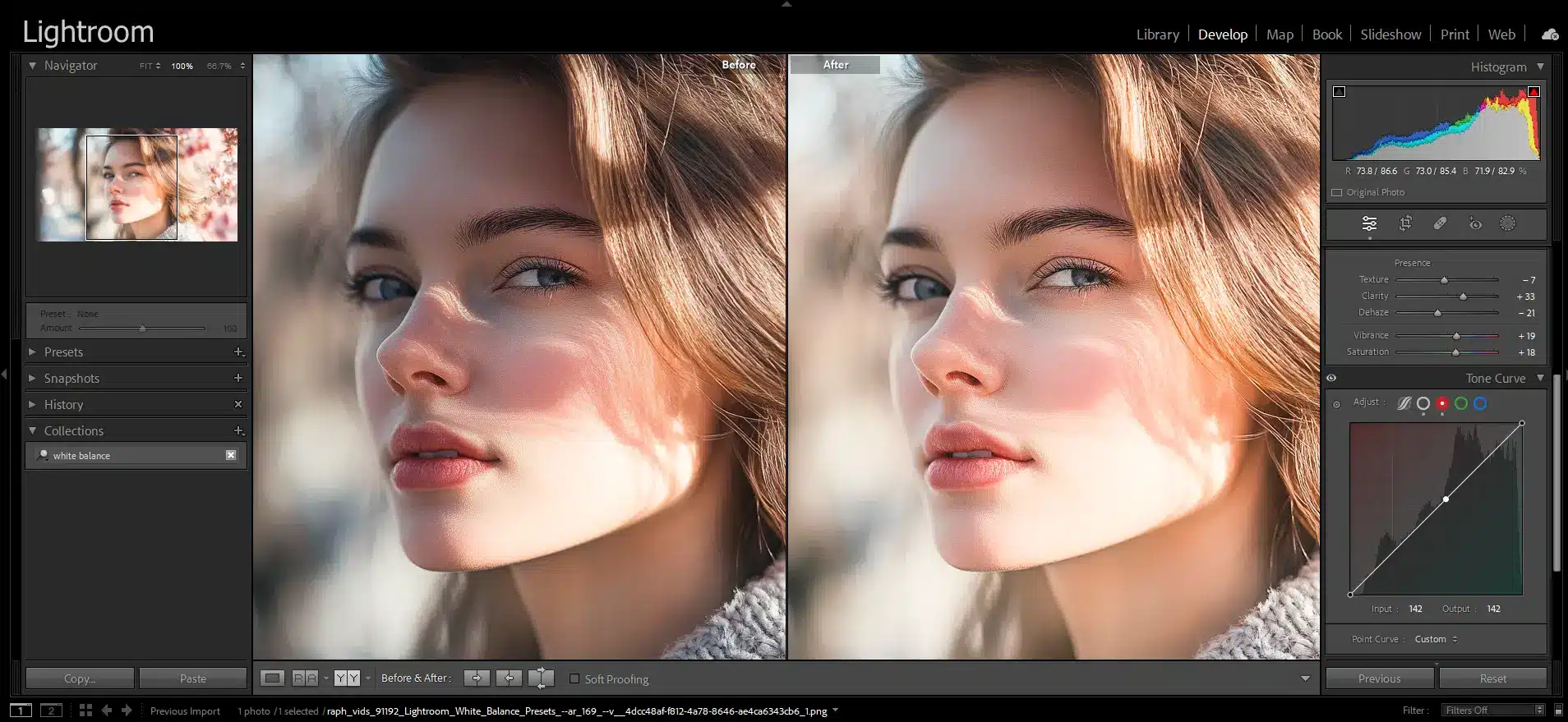
Overview of Lightroom White Balance Presets
Common Lightroom White Balance Presets:
- Auto: Automatically adjusts white balance based on the overall scene.
- Daylight: Balances for natural sunlight (around 5500K).
- Cloudy: Warms up images taken under cloudy skies (around 6500K).
- Shade: Adds warmth to images taken in shaded areas (around 7500K).
- Fluorescent: Neutralizes the greenish tint from fluorescent lighting (around 4000K).
- Flash: Balances the cool tones introduced by a camera flash (around 5500K).
When to Use Each White Balance Preset
- Daylight: Use this preset when shooting outdoors in direct sunlight. It provides a neutral color that works well for most outdoor scenes, ensuring that the colors appear natural and true to life.
- Cloudy: This preset is ideal for overcast days when the light is diffused by clouds, which can cause images to have a cooler, blueish tone. The Cloudy preset warms up the image to counteract this effect.
- Shade: The Shade preset is useful when shooting in areas with limited sunlight, such as under trees or add in the shadow of a building. Shaded areas often have a cooler tone, so this preset adds warmth to the image.
- Tungsten: Use this preset when shooting indoors under incandescent lights. Tungsten light bulbs emit a warm, orange hue, and this preset helps neutralize that colour casts, making the image appear more natural.
- Fluorescent: Neutralizes the greenish tint from fluorescent lighting (around 4000K).
- Flash: Balances the cool tones introduced by a camera flash (around 5500K).
Fine-Tuning with Temperature and Tint Sliders
- Temperature Slider: Controls the blue-to-yellow spectrum. Use this to adjust the image's overall warmth or coolness.
- Tint Slider: Adjusts the green-magenta balance. This is particularly useful for correcting skin hues or removing unwanted color casts.
Gain Control of the White Balance Adjustments Using the Temp/Tint Sliders
When it comes to achieving the perfect white balance in your photos, Lightroom’s Temperature and Hue Sliders are indispensable tools. These sliders give you precise control over the color balance, allowing you to correct color casts and adapt your images to various lighting conditions. Here’s a table to show how to effectively use these sliders to gain control of your white balance selection.
| Feature/Tool | Temperature Slider | Tint Slider |
|---|---|---|
| Function | Adjusts the image’s warmth (yellow) or coolness (blue). | Balances the green-magenta spectrum in the image. |
| Use Case | Corrects overall color temperature issues, like overly warm or cool tones. | Fine-tunes color casts, especially in mixed lighting conditions. |
| Primary Adjustment | Blue to yellow tones. | Green to magenta tones. |
| Best for | General white balance adjustments, especially in outdoor or natural light. | Correcting skin tones and specific color casts in artificial lighting. |
| Adjustment Range | Wide, affecting the overall mood and temperature of the image. | Subtle, precise adjustments for specific color casts. |
Understanding the Temperature Slider
- Moving the Slider to the Right : This increases the warmth of your image, adding yellow tones. It’s particularly useful when your image appears too cool, such as in shaded areas or under cloudy skies.
- Moving the Slider to the Left (Blue Side): This cools down the image by adding blue tones, which is helpful when your photo is too warm, such as when shot under tungsten or incandescent lighting.
Practical Example: If you’ve taken a photo indoors with warm lighting and it appears overly yellow, move the Temperature Slider slightly to the left to add blue, neutralizing the warm tones.
Mastering the Tint Slider
- Moving the Slider to the Right (Magenta Side): Adds magenta tones, which helps correct a green color cast commonly found in fluorescent lighting.
- Moving the Slider to the Left (Green Side): Introduces green tones to balance out any excess magenta, often needed when images have a pinkish hue.
Combining Temperature and Tint Adjustments
- Start with the Temperature Slider to correct the overall warmth or coolness of the image.
- Adjust the tone Slider to fine-tune the green-magenta balance, ensuring that skin tones and other colors appear natural.
- Use the up and down arrows for subtle adjustments if needed, giving you precise control over the final result.
Fine-Tuning White Balance with the White Balance Selector Tool
Steps to Use :
- Select the eyedropper from the Basic Panel.
- Click on a neutral area in your image.
- Lightroom will automatically adjust the Temperature and Tint Sliders based on the selected spot. You can then fine-tune using the sliders for the perfect balance.
FAQ Answers for Lightroom White Balance

How to get correct white balance in Lightroom?
- Use the Eyedropper Tool: Select the tool in the Basic Panel and click on a neutral gray or white area in your image. This will automatically adjust the Temperature and Tint Sliders to correct the color balance.
- Fine-Tune with Sliders: After using that, you can further refine the temperature and tint sliders to get the desired look.
- Consider Lighting Conditions: Always consider the lighting conditions of the original scene and adjust WB setting accordingly.
Is Lightroom auto white balance good?
How to get perfect whites in Lightroom?
- Use the eye dropper Tool: Click on a white or neutral gray area in your image to set the white balance. This helps ensure that the whites are true and not influenced by color casts.
- Adjust Temperature and Tint Sliders: Fine-tune the temperature and tint sliders to ensure that the whites in your image are neutral and balanced, without any unwanted color correct.
- Check for Color Casts: After making adjustments, ensure there are no blue casts affecting your whites by viewing your image under different lighting conditions on your monitor.
What is the shortcut for white balance in Lightroom Classic?
Conclusion
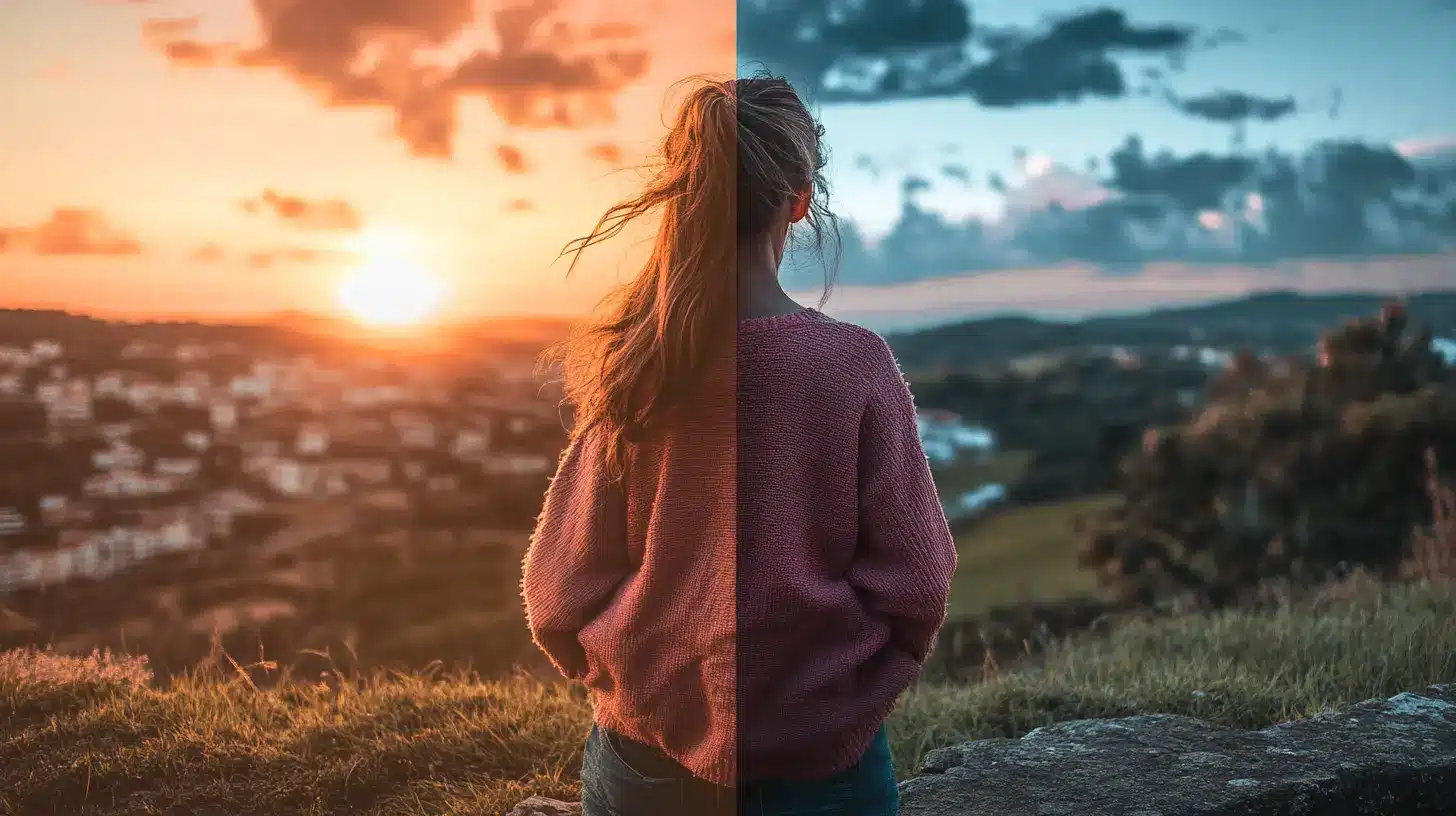
Mastering white balance in Adobe Lightroom transformed my photography. I struggled with unnatural skin tones until I learned to use the Temperature and Tint Sliders, White Balance Presets, and Selector Tool. Combining these with a grey card during shoots greatly improved my color correction and confidence. Explore our Lightroom and Photoshop tutorials to elevate your photo editing skills. Start your learning journey today by joining our Photoshop Course and Lightroom Course!
If Lightroom White Balance article has helped you, then Like and Share it with your friends.
Have a nice photoshoot!
Read more about: Photo Editing with Lightroom and Photoshop















